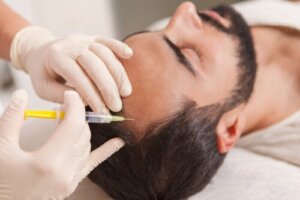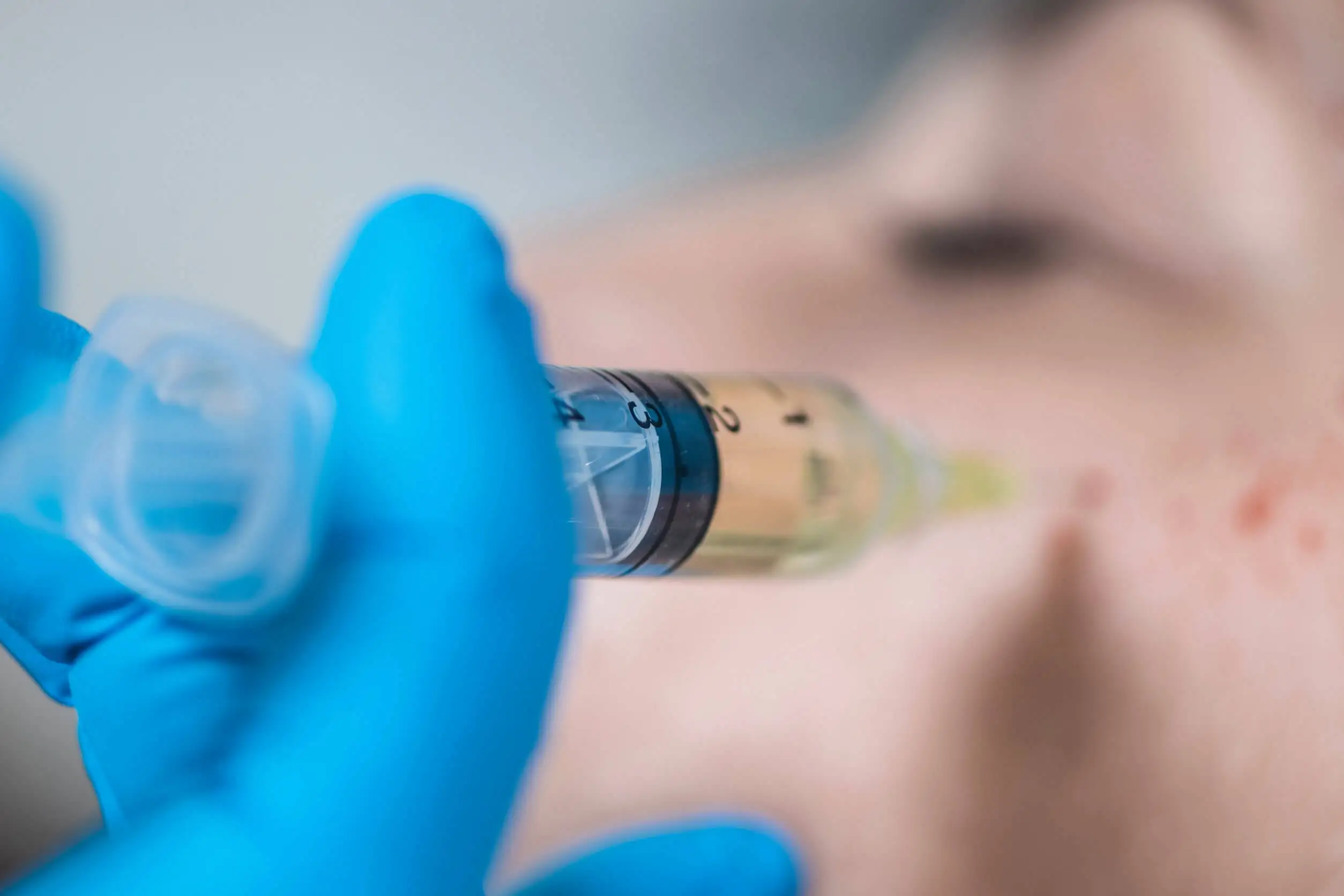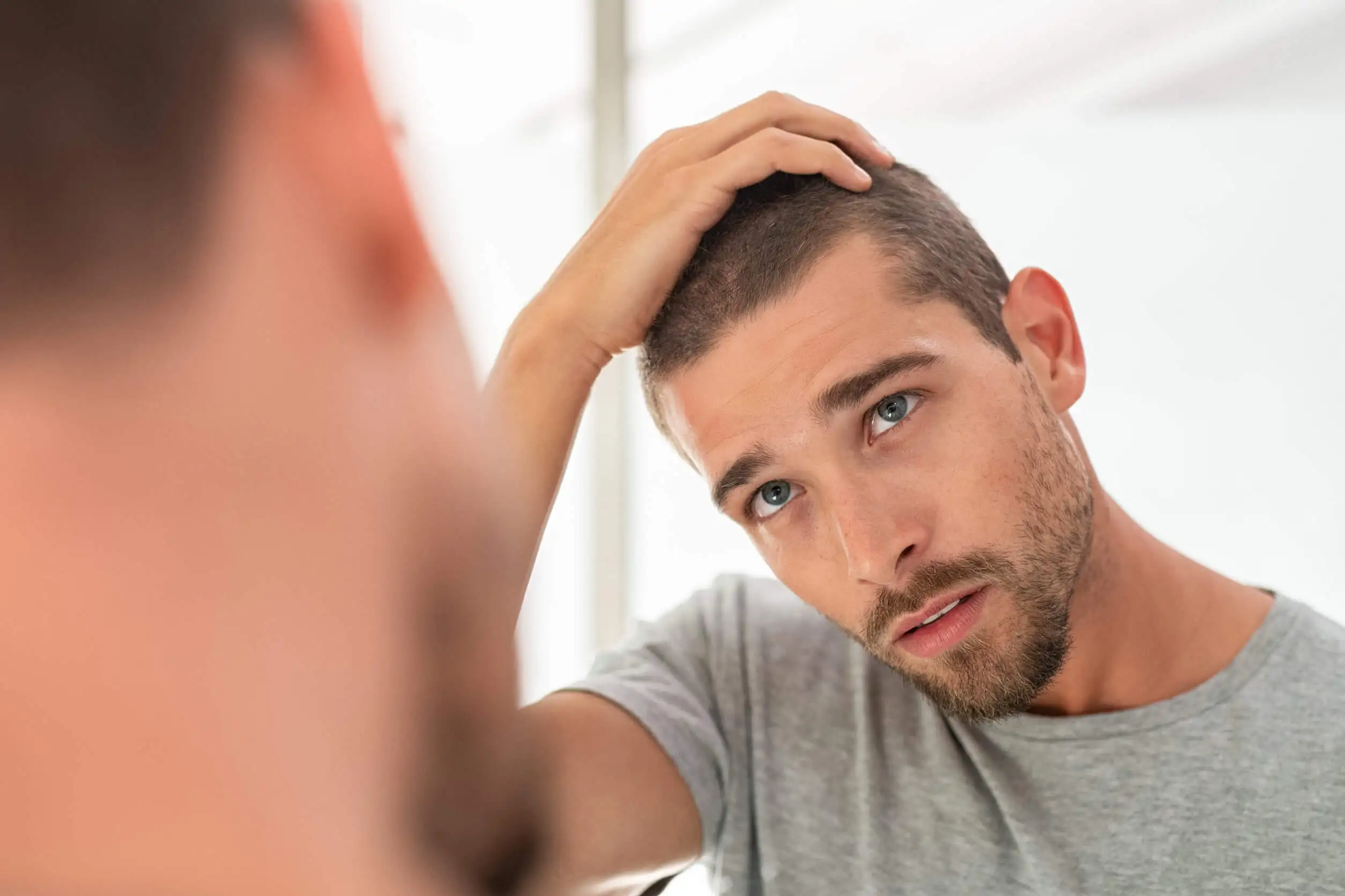What is Hair Biostimulation with Platelet-rich Plasma?


Reviewed and approved by the nurse Leidy Mora Molina
Hair biostimulation with platelet-rich plasma (PRP) is an alternative to combat alopecia and balding, as well as to prevent it. As its name suggests, this treatment consists of using PRP extracted from the patient’s own blood. It’s centrifuged to separate those components that are rich in growth factors.
This technique was developed in Europe more than a decade ago. Today, it’s used all over the world, and not only for aesthetic purposes. Read on and we’ll tell you more about hair biostimulation with platelet-rich plasma.
What does hair biostimulation mean?
Alopecia is a problem for both men and women over a certain age. In people over 30 years of age, the body’s regeneration capacity begins to diminish, even affecting the hair.
This is one of the most common causes of consultation in dermatology, due to the importance given to hair from the point of view of physical appearance. Therefore, hair loss can lead to self-esteem problems, making people feel less attractive.
However, there’s a wide variety of remedies to treat alopecia, ranging from surgical procedures (such as implants) to natural approaches with various plant extracts. For example, aloe vera or mint.
In particular, hair biostimulation refers to treatments in which some nutritive substances are applied to the hair follicle to stimulate new hair growth or stop hair loss. There are several ways to perform these procedures:
- Transdermal
- With minoxidil
- With platelet-rich plasma.
We think you may be interested in reading this, too: Androgenic Alopecia: Symptoms, Causes and Treatment
What is platelet-rich plasma?
Plasma is the liquid in which the various kinds of blood-forming elements are found: erythrocytes, leukocytes, and platelets. The latter, in addition to activating the coagulation process, also possesses growth factors.
Thus, platelet-rich plasma is a product obtained from blood by a special centrifugation process. A high platelet concentration is obtained; between 300% and 700% more than normal.
PRP is generally autologous – i.e. it is obtained from the patient him or herself. However, it can also be allogeneic. In turn, this product has applications in regenerative medicine and for various types of aesthetic treatments:
- Ulcers
- Abdominoplasties
- Dental implants
- Buttock firming
- Scar reduction
- Stretch marks and flaccidity treatment
- The revitalization of facial skin
- The prevention of premature aging

Like this article? You may also like to read: The 6 Best Remedies for Fungal Infections of the Scalp
What is hair biostimulation with platelet-rich plasma like?
The application of hair biostimulation with platelet-rich plasma for people with androgenic alopecia is in trend. In this way, blood growth factors are used to stimulate tissue regeneration in the scalp.
The vascularization of the hair follicle is increased, enhancing hair growth, strengthening it and reducing hair loss.
Hair biostimulation with platelet-rich plasma is described as a simple procedure, which does not require further preparation or excessive aftercare. Furthermore, since it’s less invasive, the risk of infection is reduced.
The process is carried out according to the following steps:
- Blood is extracted and centrifuged in a controlled manner for 10 minutes to separate the plasma fractions rich in growth factors. Although it’s not painful, cold or local anesthesia may be applied in some sensitive individuals.
- The PRP is introduced into the hair follicles by means of microinjections to stimulate regeneration.
- Once completed, the person can return to their activities, as the procedure does not require recovery.
However, several sessions must be performed, with a space of one month between each one, during the first year. Then, maintenance is done with two annual sessions.
The results and benefits
Once the PRP penetrates the capillary tissue, circulation is stimulated and even the formation of blood vessels. The results are progressive, noticeable from the second month.
In this sense, during the first year, patients begin to notice that they lose less hair. Then, they increase in thickness.
It’s assured that this procedure is effective for the treatment of mild to moderate baldness, helping in the reduction of hair loss and increasing both hair density and growth speed. It would help to prevent future problems, since it favors the production of collagen and counteracts the effect of free radicals.
It’s also considered effective when there’s hair transplantation, improving the healing of the donor area and stimulating regeneration in the recipient area. Thus, it increases the possibility of survival and success of the grafts.
In summary, hair biostimulation with platelet-rich plasma provides various benefits. It:
- Nourishes and strengthens the hair.
- Promotes collagen formation.
- Reduces the weakening of the strand.
- Reverses the process of hair loss.
- Increases irrigation in the follicles.
- Increases the percentage of hair in the alopecic area.
- Improves cuticle metabolism in dystrophic hair.
What does the science say?
Although the prognosis tends to be good, the outcome varies from person to person. It even depends on how advanced the alopecia is or the cause of the alopecia. Anecdotally, clinics that practice it report a success rate of 80%.
Now, these benefits of hair biostimulation with platelet-rich plasma have been analyzed in several studies. However, opinions on the subject seem to be divided.
On the one hand, research claims that these regenerative medicine techniques can reverse hair loss in a shorter time and with better quality. Other reviews are more skeptical, claiming that many of the studies are inconsistent and the information is insufficient to determine the efficacy of these applications in particular treatments.
Some researchers claim that the use of PRP has not only experienced a notable boom in recent years, but that studies with good results for alopecia can be found in the literature. However, its benefits have yet to be demonstrated with greater support.
According to the experts, although these proteins stimulate cell receptors, the biological response depends not only on the number of growth factors, but also on the cell receptors of each patient. Therefore, further studies are needed.

The risks, effects, and contraindications
One of the major advantages of hair biostimulation with platelet-rich plasma is that it’s a minimally invasive procedure and, therefore, relatively safe. There are no incisions and the risk of infection is minimal.
However, after microinjections for PRP infiltration, some effects may occur, such as redness of the treated area, as well as burning. It’s assured that there is no risk of allergies, hypersensitivity, or other reaction, since no foreign body is introduced.
Of course, to minimize the risks, it’s advisable to go to a duly accredited health professional. In particular, it should be a dermatologist certified in this type of procedure.
For whom is it recommended?
Hair biostimulation with platelet-rich plasma is more effective in some patients than in others, even in hereditary baldness. However, the procedure is not favorable in all cases.
Although it’s aimed at reactivating the scalp and regenerating hair in people with alopecia, each patient must be previously diagnosed by a specialist. The latter improves the probability of success and the control of side effects.
All cited sources were thoroughly reviewed by our team to ensure their quality, reliability, currency, and validity. The bibliography of this article was considered reliable and of academic or scientific accuracy.
- Bencomo Hernández Antonio A. Los derivados plaquetarios en medicina regenerativa. Rev Cubana Hematol Inmunol Hemoter. 2012; 28(4): 308-309.
- Cash T. The psychology of hair loss and its implications for patient care. Clin Dermatol. 2001; 19(2):161-166.
- Conde Montero E, Fernández Santos M, Suárez Fernández R. Plasma rico en plaquetas: aplicaciones en dermatología. Actas Dermo-Sifiliográficas. 2015; 106(2): 104-11.
- Del Ojo Cordero C. Plasma rico en plaquetas, ¿es útil en dermatología? Med Cutan Iber Lat Am. 2015; 43(2): 87-89.
- García-García M, Lirón-Ruiz R, Martín-Lorenzo J, et al. Uso del plasma rico en plaquetas autólogo en abdominoplastias. Rev Chil Cir. 2015; 67(5): 506-510.
- García García V, Corral I, Bascones Martínez A. Plasma Rico en Plaquetas y su utilización en implantología dental. Avances en Periodoncia. 2004; 16(2): 81-92.
- Kramer, ME, Keaney, TC. Systematic review of platelet-rich plasma (PRP) preparation and composition for the treatment of androgenetic alopecia. J Cosmet Dermatol. 2018; 17: 666– 671.
- Morales M, Cisneros P, López M, et al. Dutasteride micro-injections in androgenetic alopecia. Dermatología Cosmética, Médica y Quirúrgica. 2019; 17(2): 89-93.
- Robinson Rodríguez R, Ali Pérez N. Bioestimulación capilar con plasma rico en plaquetas contra la caída del cabello. MEDISAN. 2016; 20(9): 2118-2122.
This text is provided for informational purposes only and does not replace consultation with a professional. If in doubt, consult your specialist.








